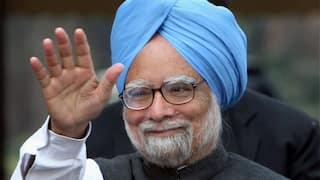Stock Market Investment: Is Buy-And-Hold Strategy Right For Every Investor? Check Details
The buy-and-hold strategy is well-suited for investors who have long-term investment goals and are willing to hang onto their investments for several years

The buy-and-hold investment strategy is a widespread approach that involves purchasing a security and holding onto it for a longer period of time, regardless of market volatility or short-term price movements. While this strategy can be a good fit for certain investors, it may not be suitable for everyone. Following are the few aspects that one should consider.
Investing Goals
The buy-and-hold strategy is well-suited for investors who have long-term investment goals and are willing to hang onto their investments for several years.
Risk Appetite
Investing in the stock market can entail major risks, and the value of your investments can fluctuate widely. If you have a low risk tolerance and are uncomfortable with market volatility, you may prefer a more conservative investment strategy.
Divergence
The buy-and-hold strategy works best when investors have a well-diversified portfolio of investments. If you have a concentrated portfolio, or if you are not sure how to properly diversify your investments, this strategy may not be appropriate.
Examining
While the buy-and-hold strategy is intended to be a hands-off approach to investing, it is still important to monitor your investments periodically to ensure they are still meeting your needs and investment goals.
However, there are some constraints to this strategy. For instance, it might not be for investors who are uneasy with the risk associated with stock market investing. Therefore, it could be said an individual may have to experience a liquidity crunch as the investing period is extremely long. One will not be able to redeem the money in emergence or will have to short their investments at a lower return. Additionally, some investors may prefer to be more actively involved in their investment decisions and may prefer a more hands-on approach.
Furthermore, it could be said that the digital times we are living in where everyone has access to everything where even a small news explodes like Fire. As a result, any stock running smoothly at its pace easily gets hit by a negative update running around the market. As we recently witnessed the same with the huge empire of Adani stocks getting collided due to the unfavourable Hindenburg report. At such times investors can lose their capital by huge margins, which shakes their confidence and impacts future investment decisions.
At last, whether the buy-and-hold strategy is right for someone depends on their individual financial status, investment goals, risk tolerance, and timeframe. It's always a good idea to speak with a financial advisor or investment professional to determine the best approach for one’s unique circumstances.
As mentioned, the buy and hold strategy is suitable for long-standing investments. One of the best examples for this would be any investment made in Reliance Industries 25 years ago. The following stock has given enormous returns of more than 5000 per cent at current Market Price of around Rs 2,500 which being just Rs 45 in the fiscal year 2000, for individuals who have parked their money in Reliance during that time with an aim of having a long-term horizon.
Another example to view and understand the buy and hold strategy would be Infosys. The stock has given massive returns to their holders over the past 25 years. At the current times, its long-term investors are enjoying the huge earnings of around 980 per cent at the present Market Price of around Rs. 1,300, who have parked their capital long back in the financial year 2000 at the Market Price of just Rs 120.
Conclusion
All in all, diversification is the key. Any investment in the stock market should be done as per individual’s investment needs and return expectations. Buy-and-hold strategy must be a part of one's portfolio to attain long term benefits while minimising short-term volatility prevailing in the market. India is one of the fastest growing economies in the world. Accordingly, the stocks with healthy fundamentals are capable of providing even better returns in the next 25 years as compared to the past, which would be supported by the approach of opting the following strategy.
The writer, Hemant Sood, is the founder at FinDoc.
[Disclaimer: The opinions, beliefs, and views expressed by the various authors and forum participants on this website are personal and do not reflect the opinions, beliefs, and views of ABP News Network Pvt Ltd.]
Trending News
Top Headlines





































